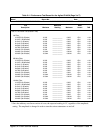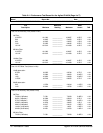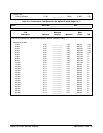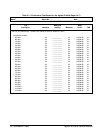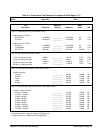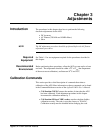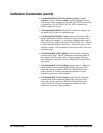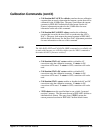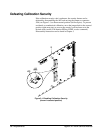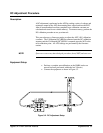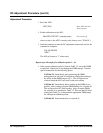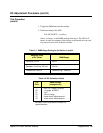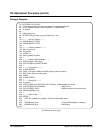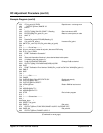
Calibration Commands (cont’d)
• CALibration:SECure[:STATe] <mode>[,<code>] enables
(<mode> = ON) or disables (<mode> = OFF) calibration security.
The security code is required for CAL:SEC:STAT OFF, but the code
is optional for CAL:SEC:STAT ON. The *RST command also
enables calibration security.
• CALibration[:DC]:BEGin starts the DC calibration sequence and
sets up the AFG for the first calibration point.
• CALibration[:DC]:POINt? <value> sends a value to the AFG so
that the appropriate calibration constant(s) can be calculated. The
AFG returns two numbers: (1) the current calibration point, and (2)
an error code (see Appendix B of the Agilent E1445A User’s Manual
for more information about AFG errors). Any non-zero error code
indicates a failure. This command also sets up the AFG for the next
calibration point.
• CALibration:DATA[:DC] <block> transfers the DC calibration
constants to the AFG. The DC calibration procedure described in
this chapter should be used in place of this command. The query
form returns the current DC constants in IEEE-488.2 definite block
data format.
• CALibration:DATA:AC[1] <block> transfers the AC calibration
constants that are used with the 250 kHz filter. The query form
returns the current constants in IEEE-488.2 definite block data
format. See the AC Flatness Adjustment procedures for more
information on the use of this command.
• CALibration:DATA:AC2 <block> transfers the AC calibration
constants that are used with the 10 MHz filter. The query form
returns the current constants in IEEE-488.2 definite block data
format. See the AC Flatness Adjustment procedures for more
information on the use of this command.
84 Adjustments Agilent E1445A Service Manual




